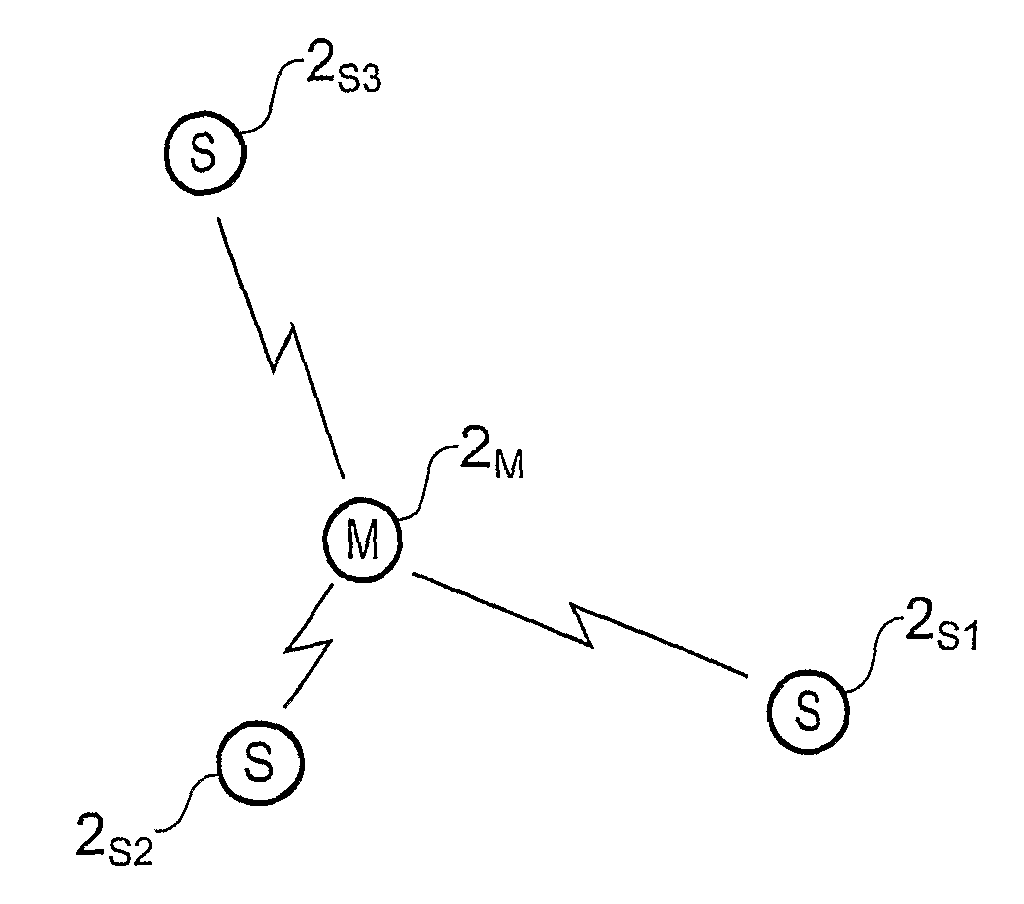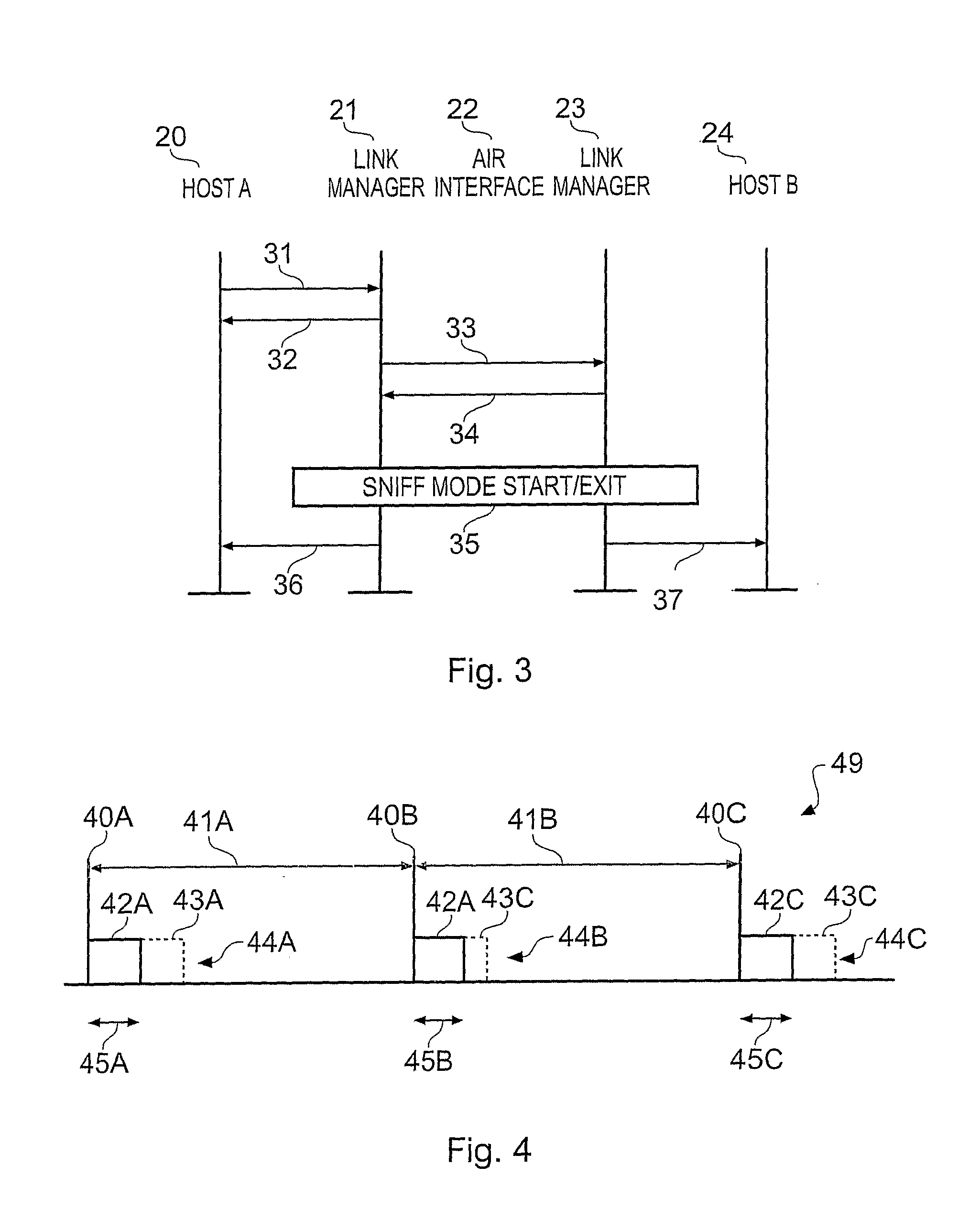Method, Apparatus or Computer Program for Changing From Scheduled to Unscheduled Communication Modes
a communication mode and computer program technology, applied in the field of method, apparatus or computer program for changing from scheduled to unscheduled communication mode, can solve the problems of window closing, not as efficient as data communication, etc., and achieve the effects of avoiding the disadvantage of higher power consumption, significant power saving, and eliminating overhead associated with a mode chang
- Summary
- Abstract
- Description
- Claims
- Application Information
AI Technical Summary
Benefits of technology
Problems solved by technology
Method used
Image
Examples
Embodiment Construction
[0026]FIG. 1 illustrates a low-power radio frequency network 1 comprising a plurality of transceiver devices. In this example, the transceiver devices communicate via the piconet 1 using the Bluetooth Protocol which is currently defined in The Specification of the Bluetooth System v2.0 (4 Nov. 2004).
[0027]The piconet 1 is an ad-hoc radio communications network controlled by a Master device 2M, and including the Master device 2M and up to seven Slave devices 2S1, 2S2, 2S3. Communications in the piconet 1 occur as a sequence of packet data units (PDU).
[0028]The devices 2 of the piconet 1 are synchronized to a common time reference determined by the native Bluetooth clock of the Master device 2M. The common time reference 20 is divided into a series of time division duplex (TDD) frames. Each TDD frame comprises two time slots.
[0029]A single physical communication channel exists within the piconet 1. This communication channel operates in a TDD fashion. It includes a downlink channel fr...
PUM
 Login to View More
Login to View More Abstract
Description
Claims
Application Information
 Login to View More
Login to View More - R&D
- Intellectual Property
- Life Sciences
- Materials
- Tech Scout
- Unparalleled Data Quality
- Higher Quality Content
- 60% Fewer Hallucinations
Browse by: Latest US Patents, China's latest patents, Technical Efficacy Thesaurus, Application Domain, Technology Topic, Popular Technical Reports.
© 2025 PatSnap. All rights reserved.Legal|Privacy policy|Modern Slavery Act Transparency Statement|Sitemap|About US| Contact US: help@patsnap.com



